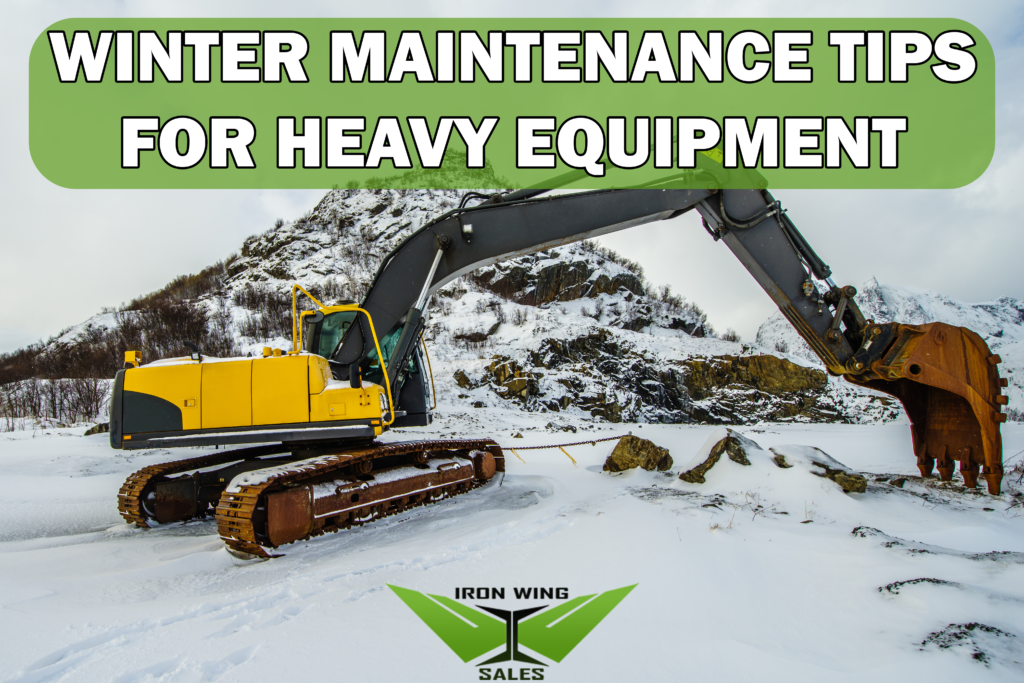
Cold weather can be tough on heavy machinery, leading to breakdowns and other issues that can slow down or halt work on a project. Proper maintenance is essential to ensure that your equipment is ready to handle the cold, and there are a few key steps you can take to prepare for and care for your equipment during the winter months.
Preparation
First, it’s important to make sure your equipment is properly winterized. This involves taking steps to protect sensitive components from the cold, such as adding antifreeze to the engine and hydraulic system, replacing any worn or damaged seals and hoses, and cleaning and lubricating all moving parts. It’s also a good idea to invest in cold-weather specific oils and lubricants, which are specifically designed to work in lower temperatures and can help prevent breakdowns caused by frozen or stiff components.
In addition to winterizing your equipment, it’s important to take extra precautions when using it in the cold. This includes warming up the engine before starting work, as cold temperatures can make it harder for the engine to turn over and get up to full operating temperature. It’s also a good idea to take breaks to allow the equipment to warm up, as this can help prevent damage to the engine and other components.
Storage
When it comes to storage, it’s important to keep your equipment sheltered from the elements as much as possible. This can help prevent damage caused by snow, ice, and freezing temperatures, and can also make it easier to start and use the equipment when it’s time to get to work. If your equipment needs to be stored outside, consider using a tarp or other cover to protect it from the elements, and make sure to clear snow and ice off of the equipment regularly to prevent damage.
Equipment sitting outside in severe winter conditions can freeze to the ground and be damaged. Whether tracked or wheeled, it can be helpful to park equipment on planks or tarps to keep it off of bare ground. Attachments should also avoid prolonged contact with the bare ground in order to prevent freezing.
Maintenance
Another key aspect of maintaining your equipment in cold weather is ensuring that it is properly fueled. Cold temperatures can cause fuel to thicken or gel, which can make it difficult for the equipment to start and run properly. To prevent this, use a winter blend of fuel or add a fuel stabilizer to your equipment’s fuel tank before storing it for the winter.
In addition to these maintenance tips, it’s important to be proactive when it comes to spotting and addressing any issues that may arise with your equipment in cold weather. This includes checking for and replacing worn or damaged components, and keeping an eye out for any warning signs that may indicate a problem with your equipment.
Finally, make sure to follow all manufacturer’s recommendations and guidelines when it comes to maintaining and using your equipment in cold weather. This can help ensure that your equipment is operating at its best and can help prevent costly breakdowns and repairs.
Overall, proper maintenance is key to ensuring that your heavy machinery and construction equipment is ready to handle the cold weather. By winterizing your equipment, taking extra precautions when using it, and staying proactive in addressing any issues that may arise, you can help keep your equipment running smoothly and keep your project on track, even in the coldest of conditions.
Heavy Equipment Parts at Iron Wing Sales
Iron Wing Sales is there to help you minimize your downtime. Replace worn parts or stock up on spares with our large inventory of OEM and aftermarket Heavy Equipment parts, including thousands of hard-to-find parts! Our inventory is in-stock and ready-ship, so as soon as your order is placed we will work on getting it shipped out. Simply browse by category, or you can use our search function to sort by description, part number, or manufacturer. We also offer free shipping on qualifying orders >$100. Additional inquiries, contact us by email: sales@ironwingsales.com or by phone:(216) 912-9089

